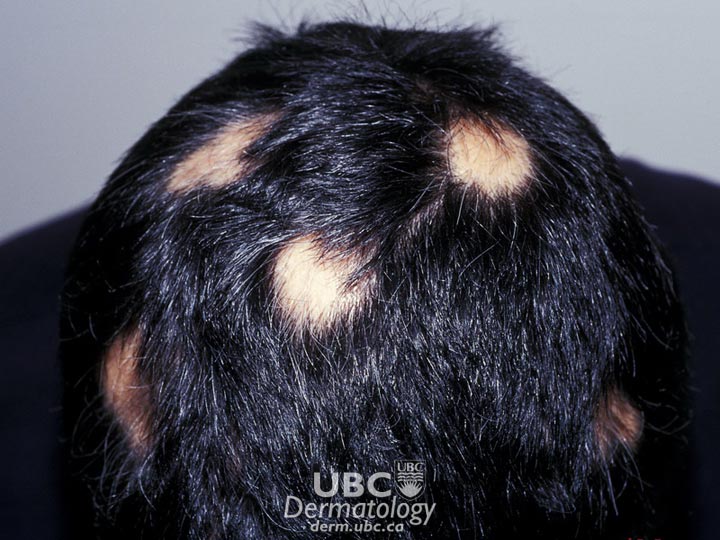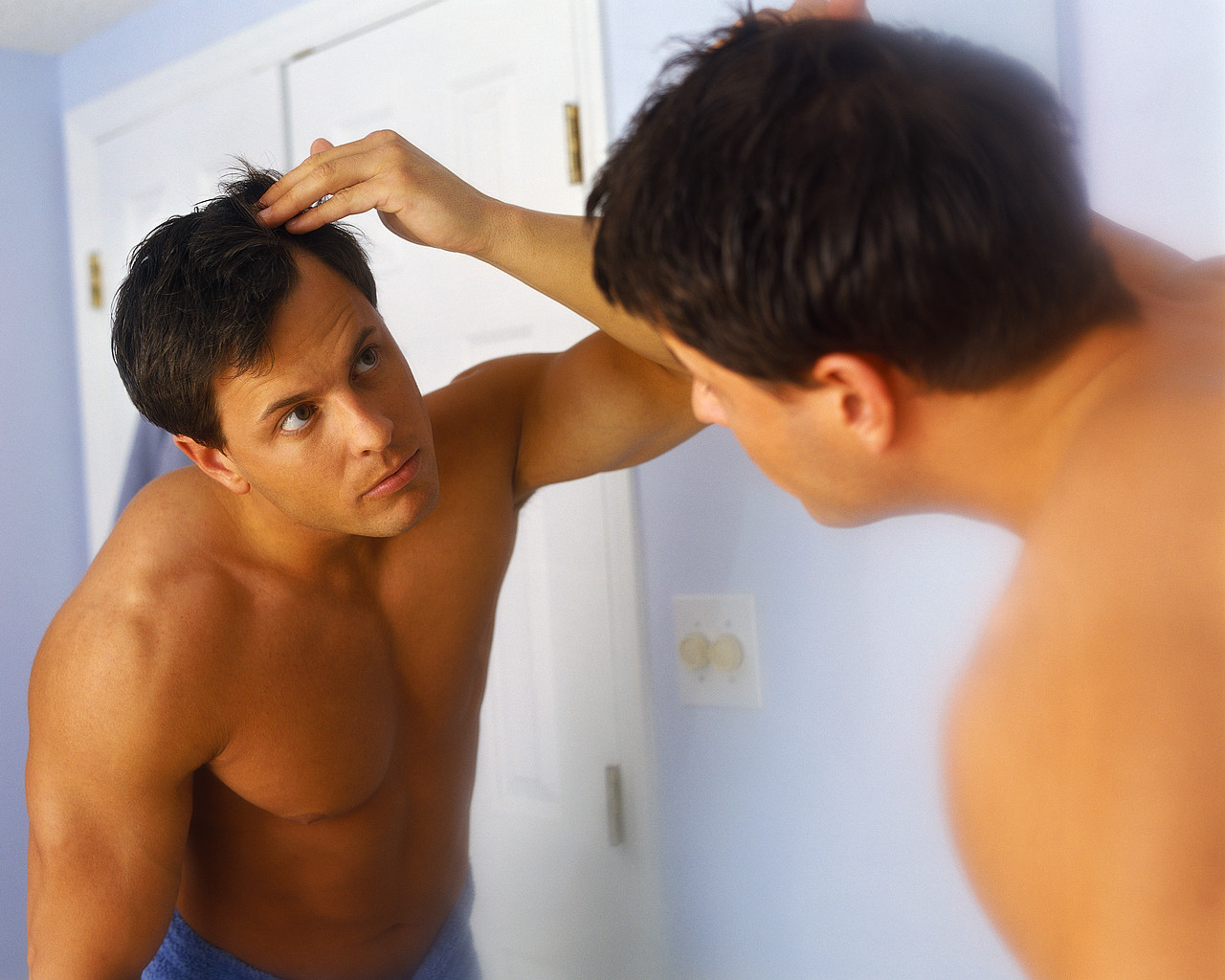Resources
Many people with alopecia—whether they seek treatment or not—may want to stay up-to-date on the condition as well as current treatments and news. The following websites are valuable sources of information:
Many people with alopecia—whether they seek treatment or not—may want to stay up-to-date on the condition as well as current treatments and news. The following websites are valuable sources of information:
 Canadian Alopecia Areata Foundation
Canadian Alopecia Areata FoundationThe information in this section has been gathered from existing peer-reviewed and other literature and has been reviewed by expert dermatologists on the CSPA Medical Advisory Board.
Alopecia is the medical term for hair loss, which can occur in small, isolated areas or over a person’s entire body. It can be temporary or permanent, and tends to occur more often in men than women.
Normal hair loss is a natural consequence of hair growth. Each hair grows for several years and then goes into a resting phase that lasts for several months. After this resting phase, the hair falls out and a new hair starts to grow. We normally lose about 100 hairs a day, although more hair may be lost from excessive brushing, washing or rubbing.
Alopecia has many causes, including an inherited disorder, skin burns, traction (e.g., from hairstyles that pull the hair tightly or compulsive hair pulling), radiation therapy and infections. Some alopecia due to traction may be prevented by loosening hair from tight ponytails or braids.
In some situations, temporary hair loss may occur for other reasons. For example, many people experience more hair loss than normal after major surgery or a severe illness with a high fever. Certain medications, including many cancer treatments, may also cause hair to fall out. Hormonal imbalances, an over- or under-active thyroid, and certain fungal infections can also be the cause. However, when these situations are corrected, the hair usually returns.
In contrast, most cases of alopecia are caused by an underlying disease or genetic predisposition and cannot be prevented. There are many different types of alopecia, but the two most common are adrogenetic alopecia and alopecia areata.
 Alopecia Areata
Alopecia Areata  Alopecia Areata 2
Alopecia Areata 2  Androgenetic Alopecia
Androgenetic Alopecia
Causes
Androgenetic alopecia (pattern baldness): Androgenetic alopecia can occur in both men and women. In men, androgenetic alopecia is caused by hormonal changes in genetically predisposed individuals. Natural processes in the body convert testosterone, a hormone present in high levels after puberty, to dihydrotestosterone (DHT). DHT acts on hair follicles to slow down or stop hair production, resulting in thinning hair. In women, androgenetic alopecia is also caused by a combination of heredity and hormone levels. However, the mechanism is not currently well understood by scientists. Some research suggests that while even trace levels of testosterone-derived DHT may trigger hair loss in women, other mechanisms may play a role.
Alopecia areata: Alopecia areata is an autoimmune disease that causes groups of hair follicles to be mistakenly attacked by a person’s own immune system. In affected areas, the hairs stop growing and the follicles become very small. Hair production drastically slows, and hair may not appear above the skin’s surface for months or even years. While new research has identified the genes that are linked to this condition, the exact triggers that cause a person’s immune system to attack groups of hair follicles are not known. Research suggests that the triggers may be environmental, stress-related, or viral. The condition is also sometimes associated with other diseases, such as autoimmune thyroid disorders, discoid lupus and secondary syphillis.
In all forms of alopecia, hair loss is frequently the only symptom, but tingling or itching may also be felt in the affected areas.
Androgenetic alopecia

In men, a characteristic pattern of hair loss is most common. Beginning at the temples and/or top of head (toward the back), hair gradually disappears. If these two areas meet the result is complete, or almost complete, baldness.
In both cases, hair loss is permanent, though appropriate treatment may trigger hair follicles to resume hair production.
Alopecia areata
One or more small, round, bare patches on the head and/or elsewhere on the body is common. At the margin of bare patches, broken hairs, wider at the top than at the base, resembling exclamation points appear. No scarring is present. Hair follicles are not permanently damaged and remain capable of producing hair.
In most cases, hair will spontaneously regress, with hair reappearing in a year. However, people who develop the condition before adolescence, are losing hair around the edge of the scalp, have a family history of alopecia areata, or have hay fever, eczema or asthma may be more likely to suffer chronic or permanent hair loss.
In some cases, the nails of the hands or feet may be rough or stippled.

Only a physician can confirm the presence of alopecia, so if you experience any of its symptoms, make anappointment to see your doctor. Your doctor will examine your scalp, hair shafts and pattern of hair loss to narrow down potential causes. Determining the cause of the condition is sometimes difficult, so a doctor may take a scalp biopsy, s alp scraping, or blood test to make a diagnosis. A biopsy will help your doctor determine if the hair follicles are healthy and normal, and in the case of alopecia areata, ensure that it is not a symptom of another illness.
Treatment for alopecia varies based on the specific type.
Androgenetic alopecia
There are two medications approved in Canada to treat androgenetic alopecia: minoxidil and finasteride. Both drugs are approved for use by men only.
Minoxidil is a topical solution of 2 per cent minoxidil, applied to the scalp, that effectively promotes hair growth in men and women. A 5 per cent solution is also available. The treatment is continued indefinitely. Discontinuation of treatment results in reversion to hair loss. Side effects include itching and skin irritation.
Finasteride is an oral treatment that effectively promotes hair growth in men. Discontinuation of treatment results in reversion to hair loss. Finasteride is not used to treat the condition in premenopausal women as the drug can affect developing fetuses. In post-menopausal women, finasteride had no effect on hair regrowth. Side effects include loss of sex drive and difficulty achieving an erection.
Other options to treat androgenetic alopecia include hair follicle transplantation and use of cosmetic aids (wigs or hair-weaving techniques).
Alopecia areata
In most cases, alopecia areata will spontaneously regress, with hair reappearing within a year. Because of this, many patients opt for no treatment at all and wear hairpieces, hair weaves or wigs until the hair grows back in. However, in other cases, the disease may persist for long periods or spread to other areas. In approximately 10 per cent of cases, the hair may never regrow. Patients whose alopecia areata began before adolescence or involves the peripheral scalp (ophiasis) or who also have hay fever, eczema or asthma may be at greater risk for progression to the chronic form.
Currently, there are no approved treatments specifically for the disease. However, many agents commonly used to treat other forms of baldness can promote hair growth, though no treatment has been shown to work consistently for all cases. The regrown hair often falls out when treatment is discontinued. However, some ways to treat alopecia areata include:
Corticosteroids
Sensitization therapy
Chemicals called contact sensitizers are applied to the area to induce a mild allergic reaction that may trigger hair growth. Common topical contact sensitizers are anthralin, diphenylcyclopropenone (DPCP), dinitrochlorobenzene and squaric acid dibutylester. The use of this treatment is limited to those for whom other treatments are ineffective.
Topical minoxidil
Minoxidil, typically used for male pattern baldness, may be applied to the bare areas. It is not effective in treating those with 100 per cent scalp hair loss.
Psoralen
Psoralen is a compound that enhances absorption of ultraviolet rays. It is usually applied to the skin and followed by exposure to ultraviolet A radiation. This treatment may prevent the immune system from attacking hair follicles. The required frequent exposure to UV light may pose an unacceptable risk of skin cancer. Side effects include skin redness and a burning sensation.
Scientists continue to research alopecia, specifically in the areas of genetics (to determine who is susceptible and why), autoimmunity (to determine the cause and possible treatments) and new medications.
Non-medical treatments
As alopecia areata is often temporary (hair grows back without treatment), some people choose to not treat the condition at all. Many wear a natural-looking wig, hair piece, or hair weave. Other people may consider having a hair transplant. However, a hair transplant involves moving a patient’s own hair follicles from the back or sides of the head to the affected area. For this treatment to work, the person must have healthy hair follicles in these areas. Before deciding which treatment is best for you, talk to your doctor to discuss your expectations as well as each treatment’s limitations. No one treatment is the best for every patient.
*All information on medical treatments on this site is provided as an overview only. For a complete and up-to-date list of side effects, warnings and precautions, read the product’s package insert and consult your doctor or a pharmacist.
**If you are considering an alternative or complementary therapy, discuss it with your doctor first, and always be sure to keep your doctor up to date about any vitamins, supplements, or other forms of alternative treatment you are taking. Like any medication, alternative therapies can interact with other medications/treatments and, in some cases, have side effects of their own. Remember that “natural” does not mean “safe.”
Alopecia does not negatively impact a person’s overall health. However, a person with the condition may feel emotionally stressed. Some people with alopecia may feel less attractive, especially when their hair loss is extensive. They may also experience frustration, loss, fear, embarrassment, hopelessness or guilt. For these reasons, support from family and friends, as well as professionals (psychiatrists, psychologists, or social workers) can help a person develop a more positive self-image and increased self-confidence.
If your feelings are extreme, or if you find you cannot participate in or enjoy your normal activities (e.g., missing school or work), counselling can be effective. Your family doctor or dermatologist can refer you to professional care.
Not all people with alopecia are affected emotionally. Many men with androgenetic alopecia accept the condition as a natural consequence of aging. And some men and women with alopecia areata take their baldness in stride knowing that, in most cases, their hair will likely grow back on its own. For many patients, the only disruption is the effort that goes into treatment, whether medication-related or not. That being said, support is available for those who seek it.
Charitable Number: 80425 7814 RR 0001
